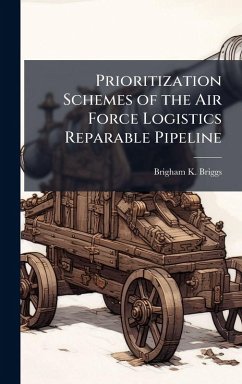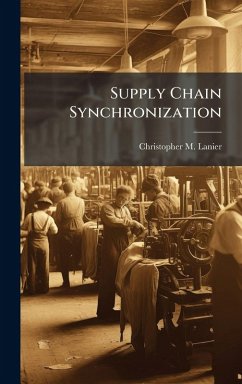
An Examination of Reverse Logistics Factors Impacting the 463-L Pallet Program
Versandkostenfrei!
Versandfertig in über 4 Wochen
29,99 €
inkl. MwSt.
Weitere Ausgaben:

PAYBACK Punkte
15 °P sammeln!
During peacetime operations, the process of tracking and managing 463-L assets within the Air Mobility Command airlift system results in infrequent imbalances or accountability issues. However, during contingency operations, AMC loses control of 463-L assets as they are turned over to the intra-theater distribution system. Since current contingency operations began in October of 2001, the Air Force has been unable to account for over 97,000 463-L pallets and 220,000 cargo nets. With a single pallet and net set costing over $1,300, the total value of the equipment unaccounted for exceeds $126 m...
During peacetime operations, the process of tracking and managing 463-L assets within the Air Mobility Command airlift system results in infrequent imbalances or accountability issues. However, during contingency operations, AMC loses control of 463-L assets as they are turned over to the intra-theater distribution system. Since current contingency operations began in October of 2001, the Air Force has been unable to account for over 97,000 463-L pallets and 220,000 cargo nets. With a single pallet and net set costing over $1,300, the total value of the equipment unaccounted for exceeds $126 million. If not corrected, this failure to account for 463-L equipment may negatively impact the flow of sustainment cargo to the warfighter. The Department of Defense, United States Transportation Command, and AMC are currently investigating the problem from multiple angles, to include new technologies, inventory replenishments, Critical Asset Recovery Teams, and Defense Transportation Regulation rewrites. Rather than focusing on these current efforts, this research attempted to determine if concepts of resource-based theory and established best practices of reverse logistics could be used to evaluate the 463-L program. Using a collective case study methodology, this research sought to identify resource related factors in existing RL literature that tend to impact program performance and then draw comparison between the 463-L program and the similar programs of industry leading air cargo carriers based on those factors. This work has been selected by scholars as being culturally important, and is part of the knowledge base of civilization as we know it. This work was reproduced from the original artifact, and remains as true to the original work as possible. Therefore, you will see the original copyright references, library stamps (as most of these works have been housed in our most important libraries around the world), and other notations in the work. This work is in the public domain in the United States of America, and possibly other nations. Within the United States, you may freely copy and distribute this work, as no entity (individual or corporate) has a copyright on the body of the work. As a reproduction of a historical artifact, this work may contain missing or blurred pages, poor pictures, errant marks, etc. Scholars believe, and we concur, that this work is important enough to be preserved, reproduced, and made generally available to the public. We appreciate your support of the preservation process, and thank you for being an important part of keeping this knowledge alive and relevant.












